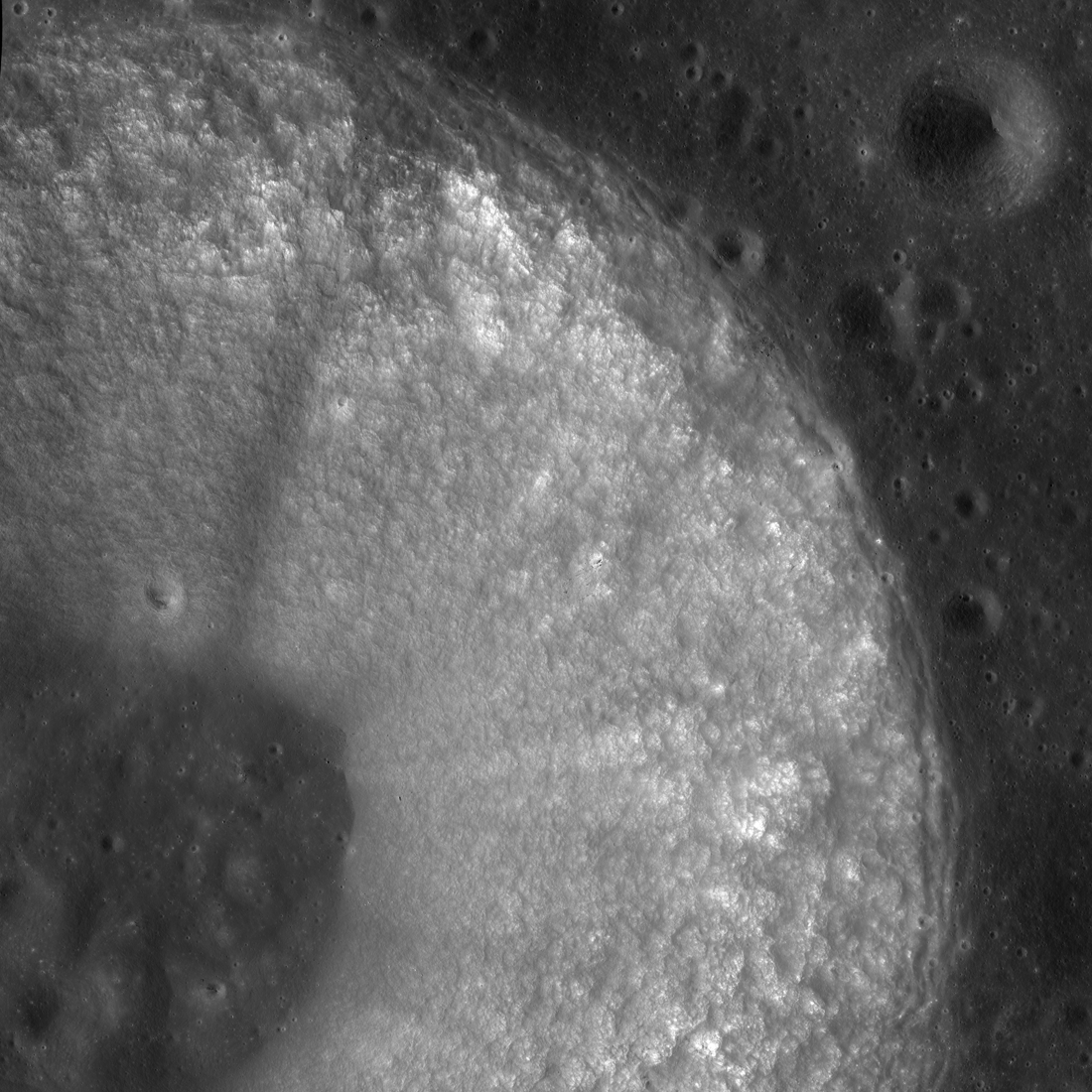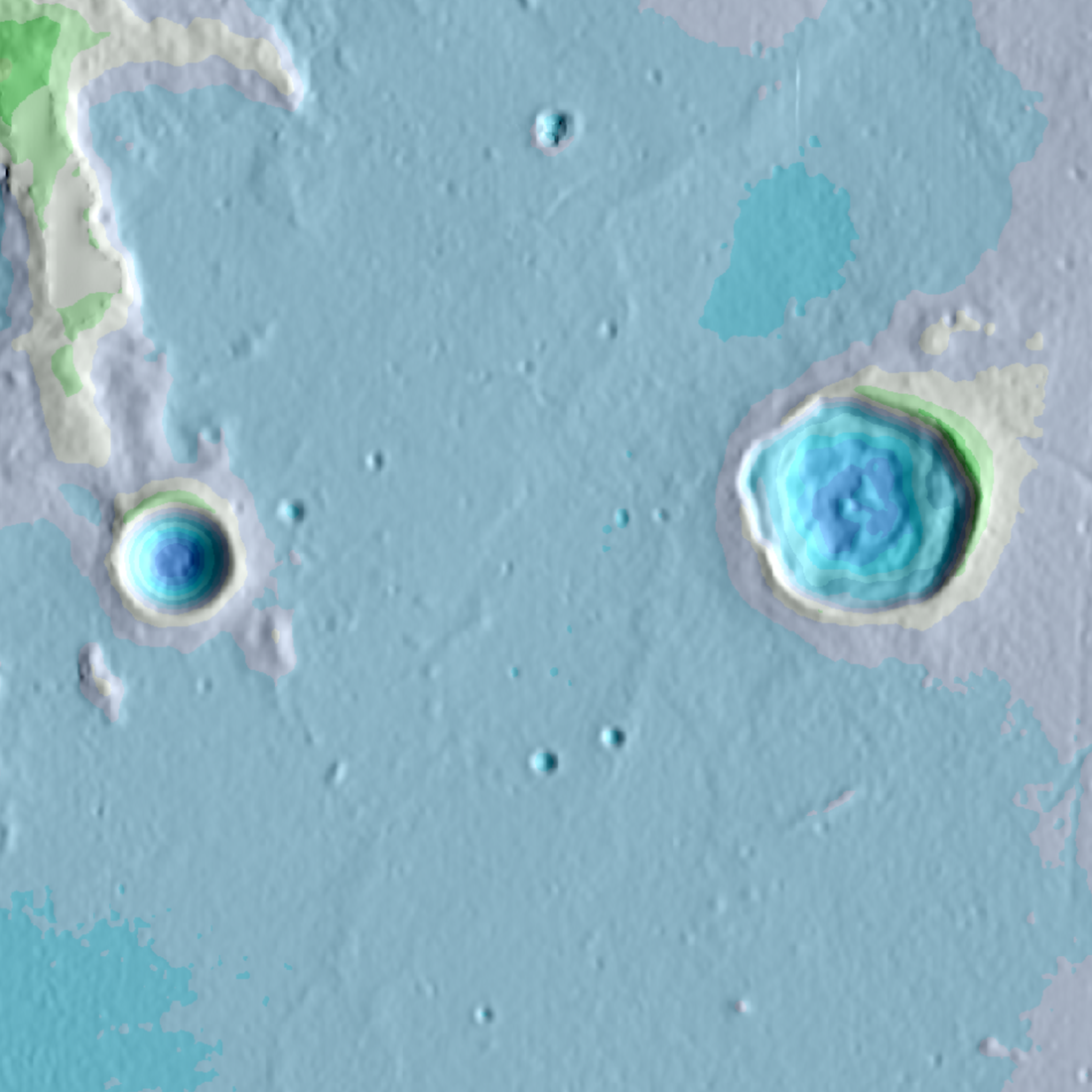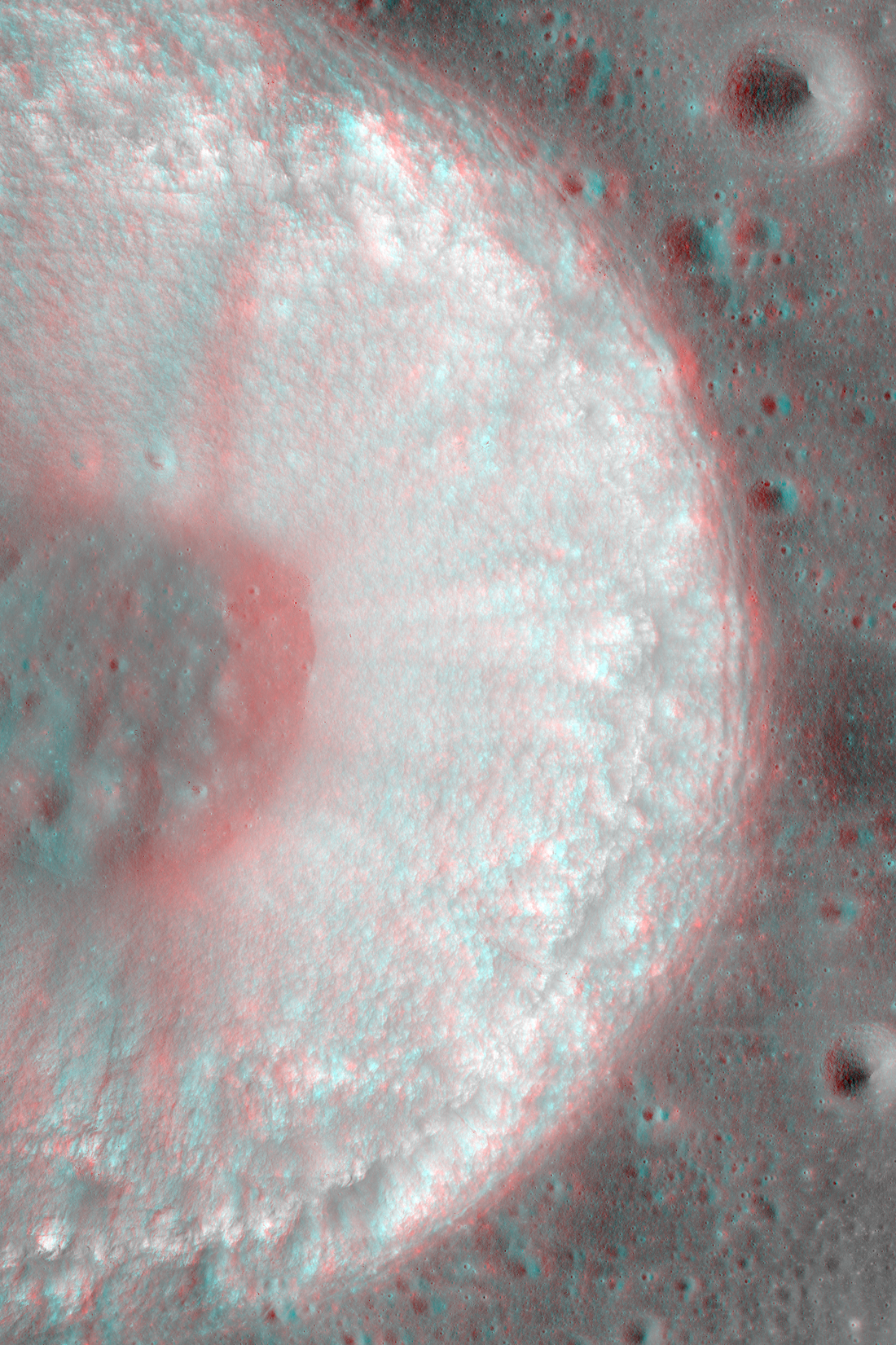
Sinus Medii, Latin for "Central Bay," is a 335-kilometer-wide small mare located, as its name indicates, at the center of the Earth-facing nearside hemisphere of the Moon. Sinus Medii lacks the distinct boundaries of large circular maria such as Mare Imbrium and Mare Serenitatis, which are centered to its northwest and northeast, respectively.
Near the northern boundary of Sinus Medii lies Chladni crater, a circular bowl about two kilometers deep from its rim to its floor. When an asteroid or comet strikes the Moon, it penetrates the surface and its kinetic energy — the energy of its motion — becomes heat. The impactor vaporizes explosively, throwing back the surface layers to form a sharp crater rim and excavating a bowl about half as deep as it is wide. Some of the impact ejecta rains down into the crater and collects at its center, giving it a lumpy central floor. A simple lunar crater is born.
At 13.1 kilometers wide, Chladni crater is near the upper limit of simple lunar crater size. Larger lunar craters typically show increasing complexity. They start as bowls, but their walls are too steep and high to stand against the pull of gravity. They collapse inward even as they form. This reduces crater depth, increases crater width, and changes crater shape from neatly circular to raggedly polygonal. Triesnecker crater, 25 kilometers wide, 2.8 kilometers deep, and just 50 kilometers east of Chladni crater, is a good example of a small complex lunar crater.

Chladni crater appears bright in Lunar Reconnaissance Orbiter Camera (LROC) images. That could be a sign that it is relatively young; however, it almost entirely lacks bright rays and close examination reveals many small impact craters on its rim and floor. These may have accumulated over hundreds of millions of years.
Chladni crater is named for Ernst Florens Friedrich Chladni (1756-1827), the father of meteoritics, the science of meteors and meteorites. Today the idea that objects fall from space is not at all controversial. In fact, we know that impact is a dominant geological process throughout the Solar System. In Chladni's day, however, space was thought to be empty apart from the Sun, the planets and their companions (moons and Saturn's rings), plus the occasional comet. Objects in space followed their assigned courses and could never collide.
People sometimes reported fireballs and rocks falling from the sky. Most educated people, however, assumed that those who witnessed fireballs and falling rocks — mostly uneducated farm laborers and provincial town-folk — were simply wrong. Close lightning strikes had awed the ignorant peasants, they declared. Hot, blackened stones found in shallow holes in the ground afterwards were almost certainly lightning-scorched terrestrial rocks.

As a youngster growing up in 18th-century Germany, Chladni gravitated toward math and science. His law professor father insisted, however, that young Chladni should follow in his footsteps, so he became a doctor of law. In 1782, Chladni's father died, so he could switch to physics. He is today regarded as the father of acoustics, the science of sound.
Chladni could find no salaried university teaching position, so he became a rolling stone. He supported himself by playing musical instruments of his own invention across Europe. His performances were as much science lectures as they were concerts.
In the course of his travels, Chladni visited scientists and libraries. In 1793, he visited Georg Christoph Lichtenberg, a physicist in the habit of tossing out ideas for others to research. Lichtenberg suggested that Chladni compile a list of fireballs and falling rocks throughout history. Chladni accepted the challenge, and a year later published a short book called On the Origin of the Mass of Iron Found by Pallas and Of Other Similar Ironmasses, And On A Few Natural Phenomena Connected Therewith. In it, he thanked Lichtenberg for inspiring his research.
Chladni documented 18 fireballs and accompanying rock falls spanning almost 1650 years. He also described iron boulders weighing hundreds or thousands of pounds whichl, according to folklore, had fallen from the sky. He assessed with a law professor's critical eye the many details eyewitness accounts of fireballs accompanied by falling rocks had in common.
The available evidence, Chladni argued, pointed to a space origin: for one thing, while no evidence existed to support the theory that space is empty, fireballs and falling rocks by their existence indicated that it is not. In addition, Chladni explained, fireballs move faster than would be possible if Earth's gravity were entirely responsible for their velocity. They must have started out moving quickly beyond the atmosphere, in space.
Chladni's book helped to ensure that, when four fireballs showered rocks on Italy, England, Portugal, and Uttar Pradesh between 1794 and 1798, scientists paid attention. They studied the chemistry and structure of the fallen rocks, and soon found them to be similar to each other but unlike known Earth rocks. Chladni lived to see a space origin for fireballs and the rocks they deposit on Earth become widely accepted.
The year 2019 marks the 225th anniversary of the publication of Chladni's book. In 1993, ahead of the 200th anniversary, a team of scientists named a new mineral they found in a meteorite Chladniite in his honor. You can explore the bowl-shaped simple lunar crater named in Chladni's honor in the Zoomify image below.
Sources
McCoy, T. J., Steele, I. M., Keil, K., Leonard, B. F., and Endreß, M. (1994), Chladniite, Na2CaMg7(PO4)6: A new mineral from the Carlton (IIICD) iron meteorite, American Mineralogist, 79, 375-380
Related Featured Images
Surveyor 6 on the plain of Sinus Medii
Curiously Fast Degradation of Small Lunar Craters
Every Crater on the Moon (Larger than 5 km)
Published by David Portree on 21 February 2019